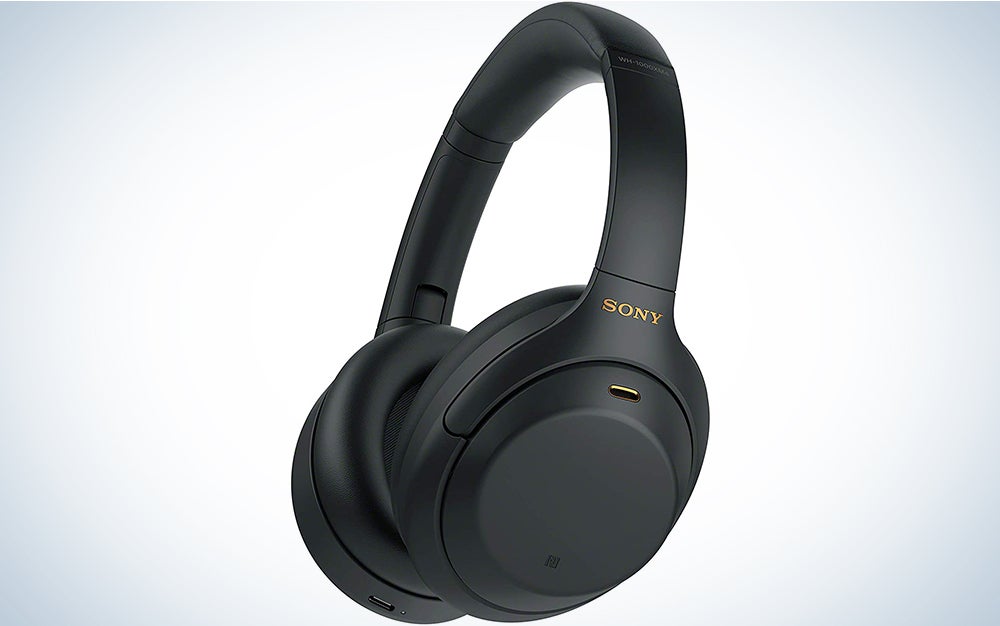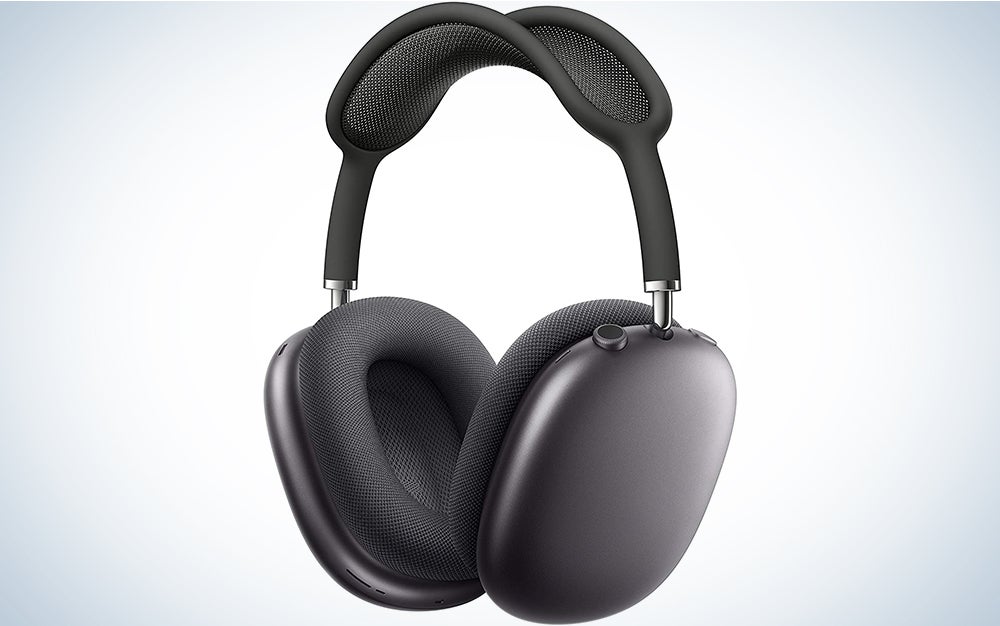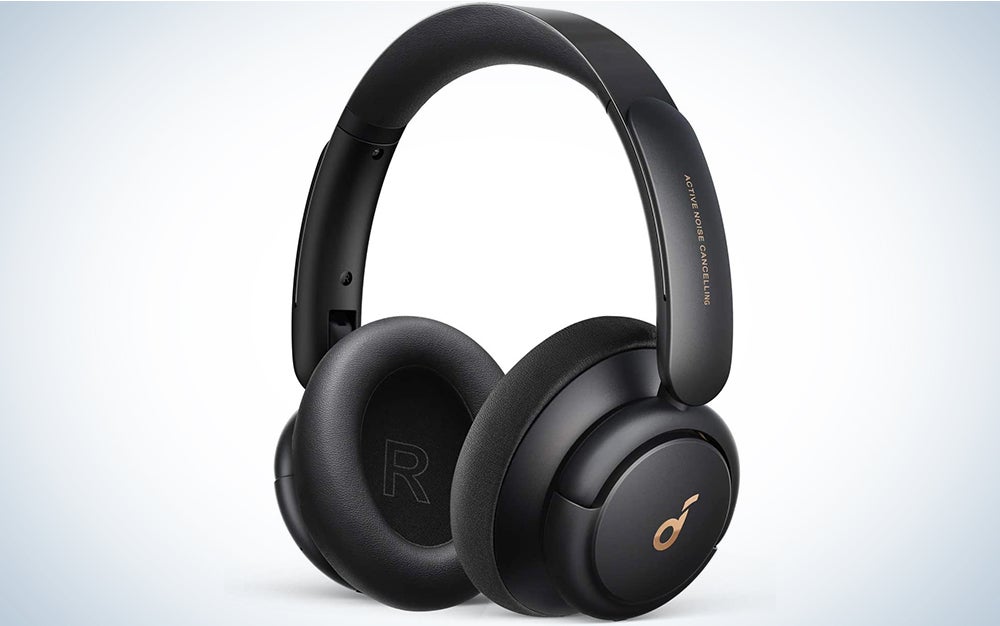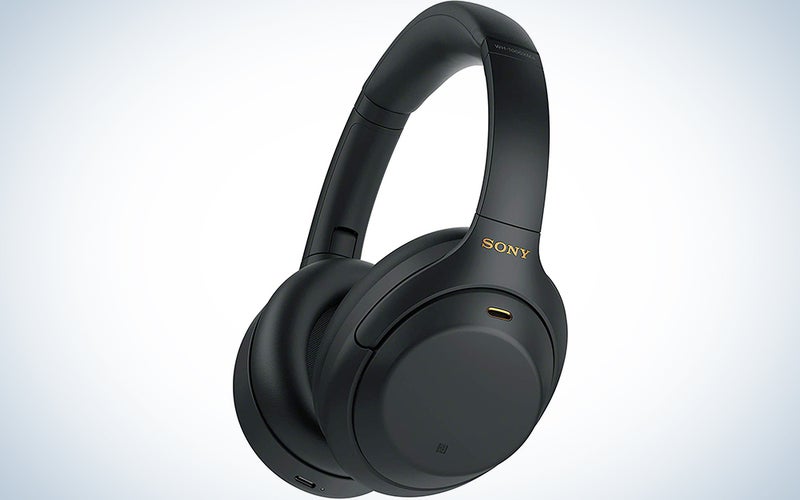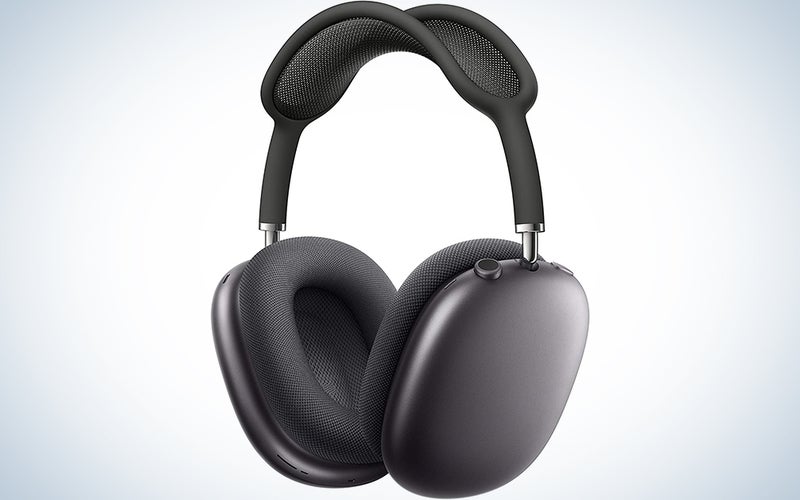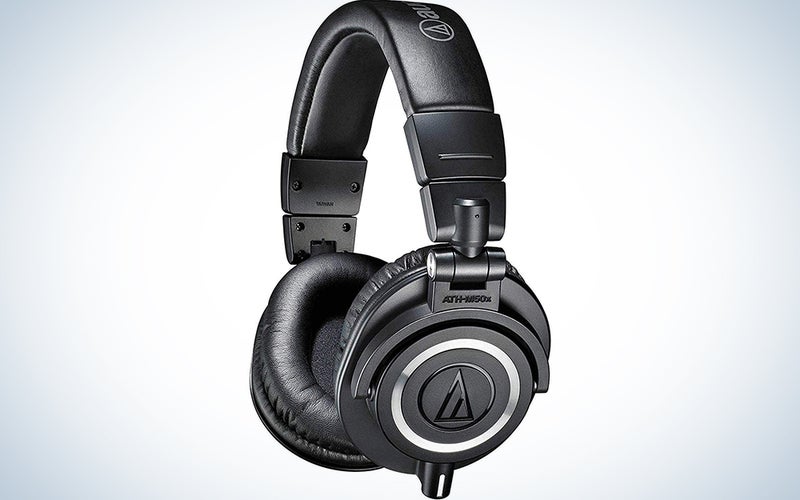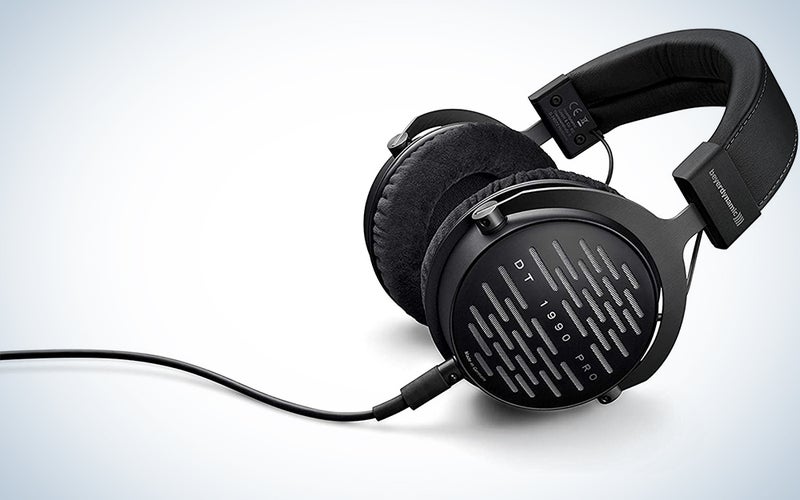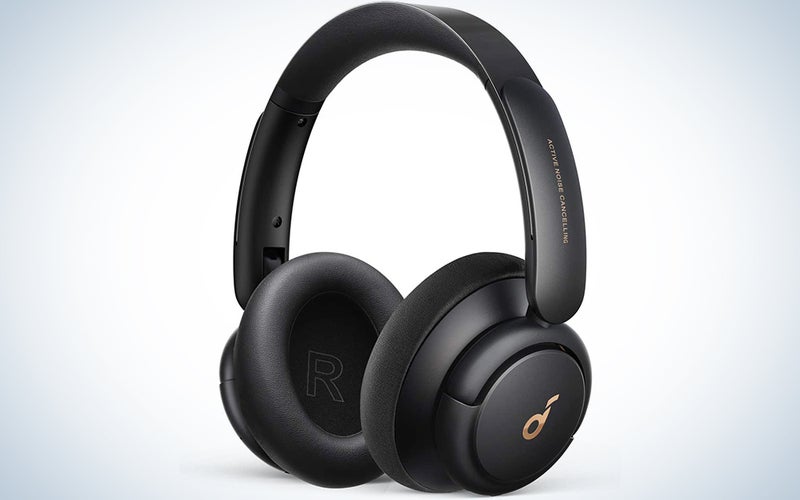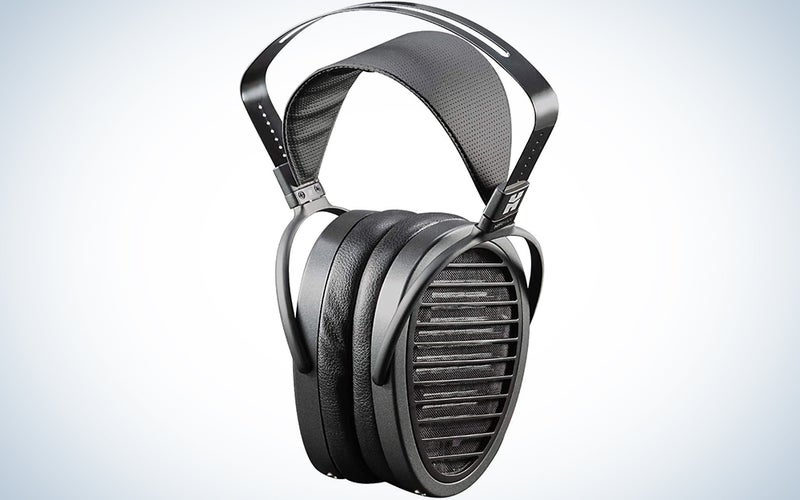We may earn revenue from the products available on this page and participate in affiliate programs. Learn more ›
It’s hard to believe, but headphones were once only cheap accessories that just got the job done or expensive add-ons for serious enthusiasts. Now there are so many accessible quality headphones raining down like manna from heaven it’s easy to catch a case of analysis paralysis when it’s time to shop. Don’t worry, we’re here to sort out the best cans we can. For those who need a soundtrack as they whittle away the hours working or playing, there’s a veritable universe of audio innovation out there that’s tailored to your personal preferences when it comes to maintaining concentration and communication. We’ve put together this handy guide to some of the best over-ear headphones to help point you in the direction of your next pair.
- Best for getting through work: Sony WH-1000XM4
- Best for when industrial design is the apple of your eye: Apple AirPods Max
- Best for capturing every detail: Audio-Technica ATH-M50X
- Best for making sure all the stuff is good stuff: beyerdynamic DT 1990 Pro
- Best for saving money without sacrificing the mood: Soundcore by Anker Life Q30
- Best for getting lost in the moment…for hours: HIFIMAN Arya
What to consider when shopping for the best over-ear headphones
Whether you’re video conferencing, commuting, live streaming, sculpting beats, or just immersing yourself in any genre of music, the best over-ear headphones provide you with harmonious accompaniment. Here are a few things to consider to make sure you get the ones that are a sound investment for you.
Why do you keep saying “over-ear”…are there different types of headphones?
There are two main forms of headphones: circumaural and supra-aural. Circumaural headphones circle the ear, covering it completely and providing some passive noise reduction. Supra-aural headphones sit on top of the ear, making them smaller and easier to take on and off, but less immersive. While both types technically sit over the head, we’re concentrating on circumaural, truly over-the-ear headphones for this roundup.
Can I drown out the world without damaging my hearing?
Are you working from the luxury of your living room, trying to fill the role of a content creator but the sound of your cat begging for attention keeps you from getting into the zone? Are you stuck in a cubicle or on your commute and need to drown out incessant chatter? Active noise-canceling technology (ANC) is what you need. In simplest terms, microphones in the headphone pick up environment noise and a processor analyzes it and generates inverse sound waves that are broadcast alongside your music, helping to cancel out the frequencies from the outside.
What if I don’t want to take my headphones off every time someone wants to talk to me?
Taking advantage of all the microphones built into the best wireless over-ear headphones, many headphones offer something commonly known as Transparency mode. The headphones pipe in some of the external noise and mix it in with whatever you’re listening to. This blend has the potential to increase your productivity and heighten your situational awareness, just in case coworkers or just cohabitors direly need your attention.
You keep mentioning wireless headphones—are they the best option?
That depends on what you want out of your headphones: the most convenient or the highest fidelity. Wireless headphones are undeniably less of a hassle than dealing with wires (if you even have devices with an old-fashioned 3.5mm headphone jack anymore). And Bluetooth over-ear headphones audio has come a long way, and there are pairs that support formats such as aptX HD and LDAC which can broadcast bitrates between 576 kbps and 990 kbps (better than the 256 kbps of standard Bluetooth). However, there’s still compression involved. Opting for wired headphones means the signal chain doesn’t get converted and decoded as often and the sound can retain its full sonic data, which is important for audio engineers and audiophiles.
The best over-ear headphones
The purpose of personal audio is to transport you from one world to another. The best over-ear headphones get you in the groove, somewhat literally as they surround your ears with rhythm. Here are some top picks from one of our favorite categories of portable pleasure.
Best for getting through work: Sony WH-1000XM4
Sony
If we’ve learned anything it’s that we can work from anywhere and everywhere—at least that’s the idea. When you’re at home, though, the distractions just keep piling up. Crying kids, the neighbors sawing low-hanging branches from trees, the city jackhammering through the street outside your window. We live in a noisy world and sometimes that can be a mind-numbing, soul-crushing distraction. If noise cancelation is now worth its weight in gold, the $350 Sony WH-1000XM4 wireless Bluetooth headphones (reviewed here) are Fort Knox when you’re on deadline and the world won’t shut up. Light at 8.96 ounces, and easily stowed away in a flat oval case, the WH-1000XM4 noise-canceling headphones are comfortable to keep on your head. And with up to 30 hours battery life, it could stay there as long as you need it. Plus, it’s got all the industry-leading technology needed to both reduce external noise and enjoy big, rich, immersive audio.
Best for when industrial design is the apple of your eye: Apple AirPods Max
Apple
Whether you’re sitting still for hours at a time, or you’re on the move, weight and durability are serious factors when choosing headphones. Consider the ears: Nobody wants sweaty ears or sore lobes due to bulky design and unforgiving ear pads. And besides, when you’re accessorizing, you wanna look good, right? The Apple AirPods Max—our review here—is a set of wireless headphones with a look and feature set as dynamic as its sound. Equipped with Apple’s H1 chip, the AirPods Max pair with, and swap between, iOS/macOS devices seamlessly. They have excellent ANC, as well as an adaptive EQ that adjusts the music to compensate for your surroundings. Plus they contain a gyroscope and accelerometer that allow for head-tracking features which will expand the experience of the upcoming iOS 15. If you’re deep in the Apple ecosystem, the AirPods Max is worth the $500 indulgence.
Best for capturing every detail: Audio-Technica ATH-M50x
Audio-Technica
Audio-Technica over ear headphones are workhorses of professional recording studios, durable enough to withstand the rigors of drum tracking sessions and other tests of strength. Chances are, that makes them sturdy enough for whatever you’re doing, whether it’s podcasting or livestreaming. Large 45mm drivers and a 15-28,000 Hz frequency response offer up a clear, natural, but punchy sound, with plenty of rich bass. This makes the Audio-Technica ATH-M50x as well-equipped for home recording as it is gaming or DJing (earcups swivel 90 degrees, great for one-eared monitoring). These aren’t wireless, and they have no active circuitry, but a detachable (replaceable) cable adds to the headphones’ longevity. And, at only $150, you don’t mind too much if you have to replace it.
Best for making sure all the stuff is good stuff: beyerdynamic DT 1990 Pro
beyerdynamic
When quality control is chief among your priorities, and you’re making those critical cuts to a podcast or giving a focused listen during a mix session, you don’t want to miss anything and everything needs to be in its place. Getting the balance right starts with you being in the proper headspace. The beyerdynamic DT 1990 Pro is a reference headphone that offers superior separation and rich depth of sound for making critical decisions in the studio. It’s open-backed, so requires an isolated listening environment. On top of that, the 45mm Tesla neodymium drivers really benefit from quality amping. But if you can put in what it needs, the DT 1990 will give back a naturally spatial view of your audio that assures you won’t miss any low-level high-resolution details in your audio. Is $600 too much for perfection?
Best for saving money without sacrificing the mood: Soundcore by Anker Life Q30
Soundcore
Shopping for the best budget headphones can be a difficult tightrope walk between seeing the hype and believing the reviews. Taking time to pick the right ones will not only save money, but give you the listening experience you crave. These wireless over ear headphones from Soundcore by Anker attempt to give the marquee brands a run for the money with 40mm thumping drivers, 40-plus hours of playtime, and multiple settings-specific and noise-cancellation modes. All for under $100. For pressure-free comfort and dynamic sound, these headphones offer the biggest bang for your bucks.
Best for getting lost in the moment…for hours: HIFIMAN Arya
HIFIMAN
When money is not an object, there are plenty of headphones out there claiming to be the best of the best. And if you crave an experience as distinct to your ears as your fingerprints are to your hands, turn to a planar magnetics headphone, like in the HIFIMAN Arya. This technology puts a nanometer-thick diaphragm between two magnetic arrays, allowing it to immerse your entire ear in distortion-free sound. Whereas a traditional headphone driver is a 30mm to 50mm cone that is pushed one way, the ones in this headphone’s supremely comfortable oversized earcups are 130mm wide and can vibrate faster and more expansively. More surface area, more transcendence. The Arya is open-backed, so intended for home consumption but, for safety’s sake, you’ll want to be sitting down somewhere anyway when you first experience its evocative detail retrieval and sibilance-free snappiness. It’s a statement piece (at a $1,599 statement price) that will leave you speechless.
FAQs
Q: Are over-ear headphones better?
Once you start digging into the nitty-gritty of the headphones and earbud world, you’ll notice that there’s a whole spectrum of different fits and styles out there. Over-ear headphones have a few advantages over the competition. They encompass your whole ear so they often provide decent sound isolation even without active noise canceling. They’re already large, so there’s room inside for more powerful drivers. Plus, some are built like leather sofas with memory foam padding and luxurious finishes to pamper your head as you listen to Hall & Oates. But, over-ear headphones aren’t for everyone. Earbuds are typically better for gym-goers and some people prefer on-ear headphones that press up against your ear instead of encompassing it. While over-ear headphones have some very notable selling points, only you know what your head really wants.
Q: Should I buy headphones or earbuds?
This is a multi-stage question that’s probably best answered by an elaborate flow chart, but here’s the short version. First, determine where you’re going to do your listening. If you plan to wear them on a regular commute or sitting at your desk, the bulk of larger headphones won’t prove much of a burden. If you’re planning to wear them to the gym or during any kind of vigorous activity, then earbuds are probably a better call.
You should also consider your head and ear shape. People with large domes can start to get uncomfortable wearing headphones due to overly aggressive clamping pressure. A few hours of listening and you can start to feel like that guy in Scorcese’s gangster classic Casino. On the other end of the spectrum, some people’s ears just won’t hold onto earbuds. Even with support structures or molded tips, they want to constantly fall out. It’s maddening.
If none of that comes into play, that’s when it becomes more of a personal taste issue. It’s always best to try them in person if you can. That’s the best way to get a real feel for what you’ll like.
Q: Is Active Noise Cancelling worth it?
If you spend a lot of time on trains, planes, busses, or any other enclosed space that may contain people breathing loudly and crinkling food wrappers, then active noise canceling is probably worth the splurge. It’s worth noting, however, that not every ear reacts to ANC the same way. Some people find that the noise-canceling system creates an unpleasant pressure in their ears if it comes on too strong. If you’re not sure how much noise canceling you really want, you can opt for a pair that lets you turn it on and off as well as tweak its power level to match your current environment.
A final word on the best over-ear headphones
Just because a pair of headphones come with a lower price tag doesn’t mean they’ve sacrificed quality. The right tool for the right job depends on your needs regarding noise-canceling, connectivity options, battery life, and sound. There are countless headphone options available for any budget—anything is possible. Sometimes luxury is lost on certain listening habits. Do the research before zeroing in on the best over-the-ear headphones for what you need before mashing that pay button.

